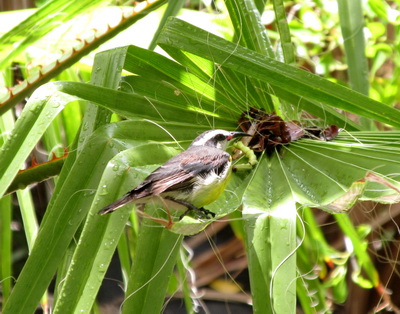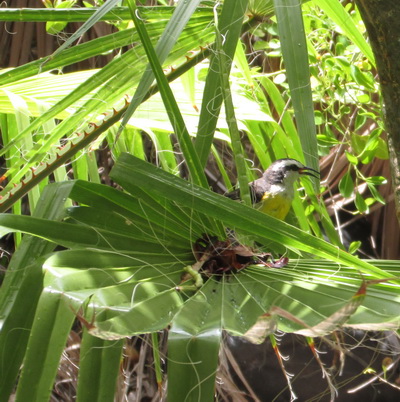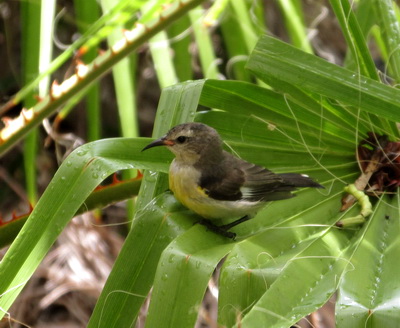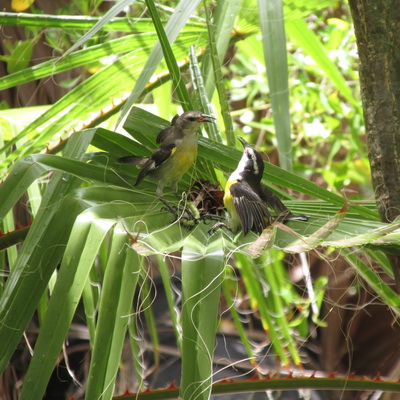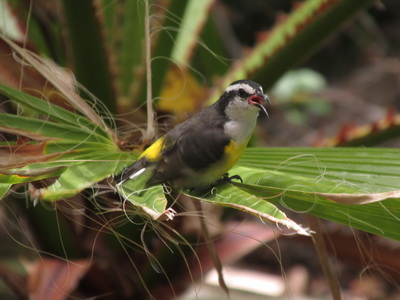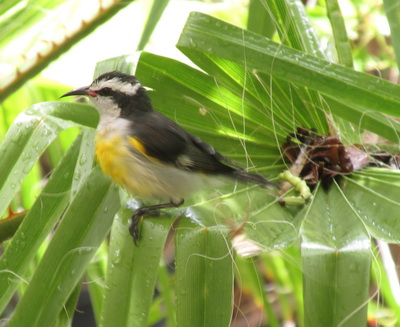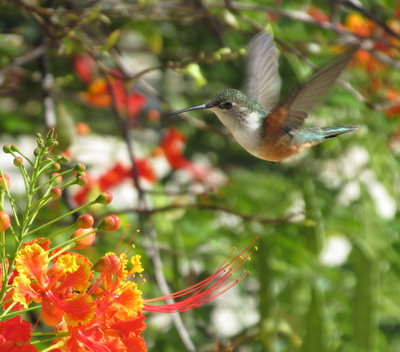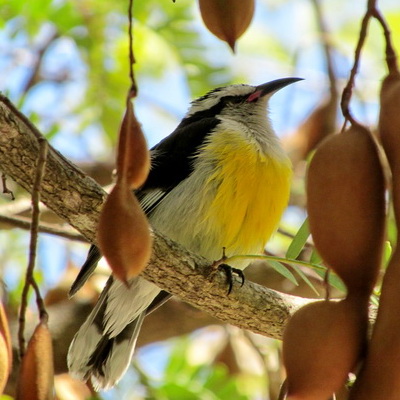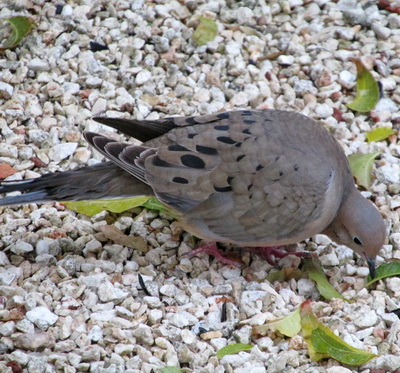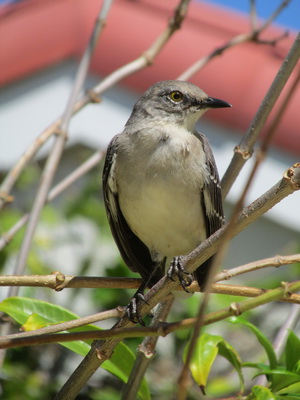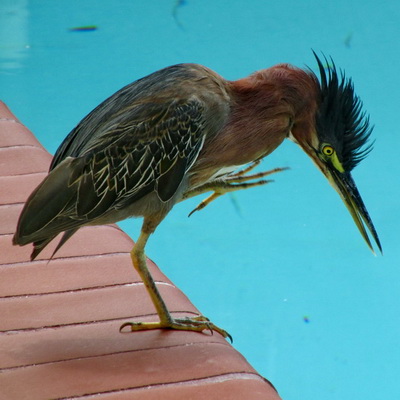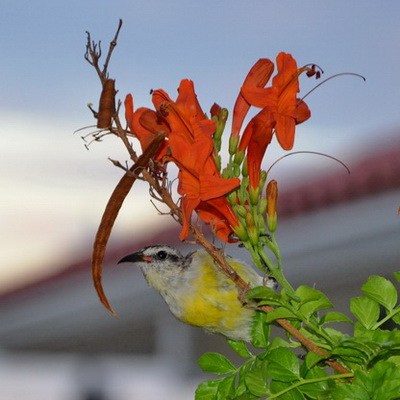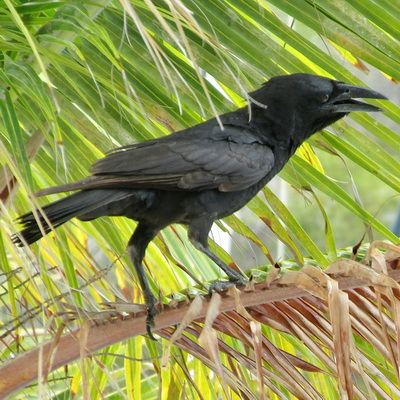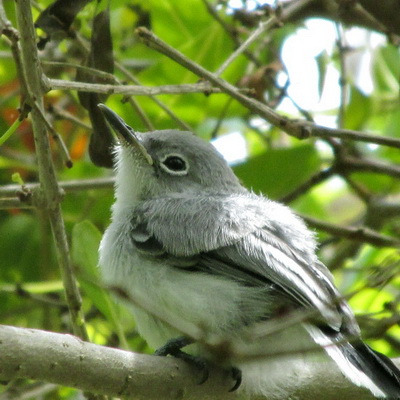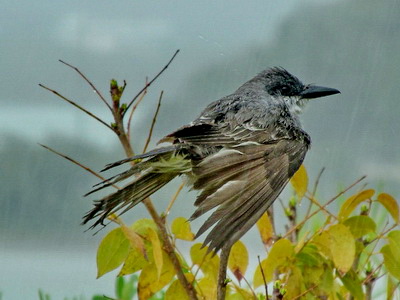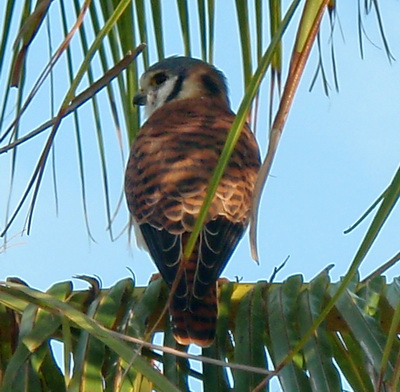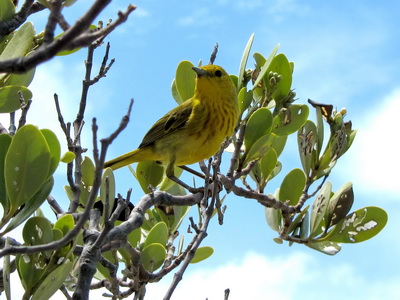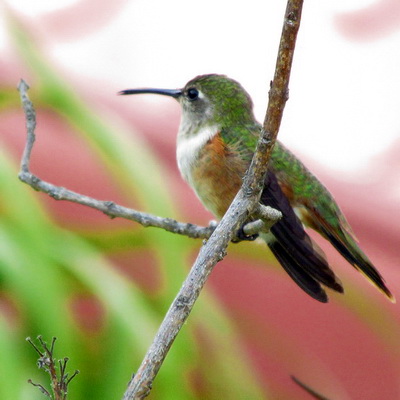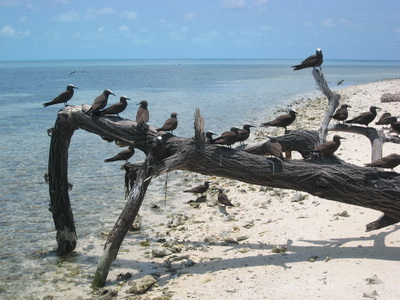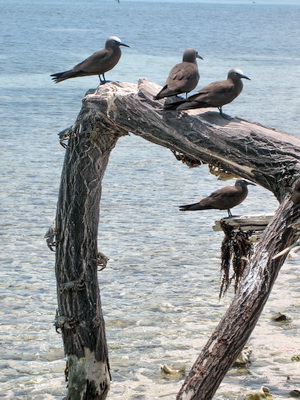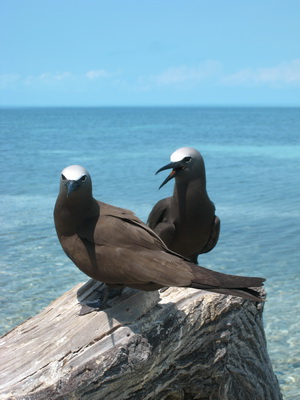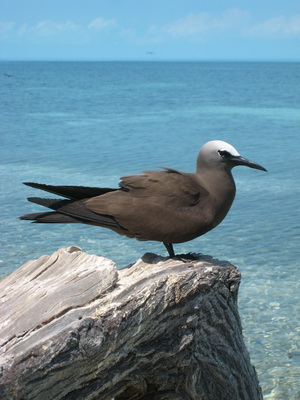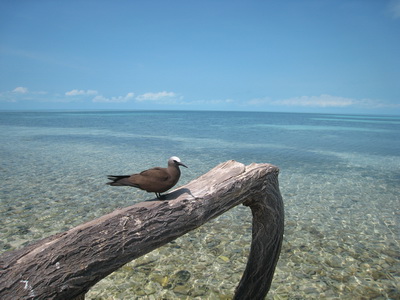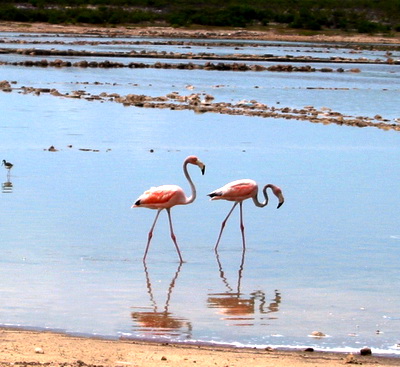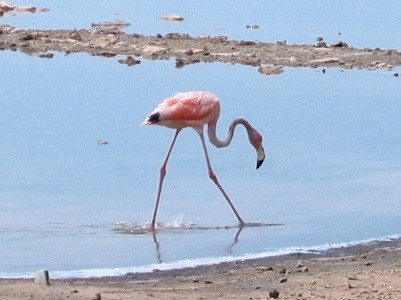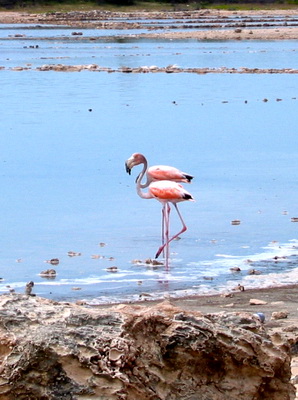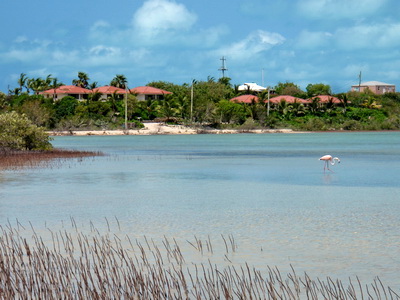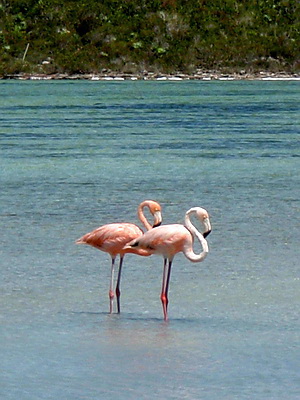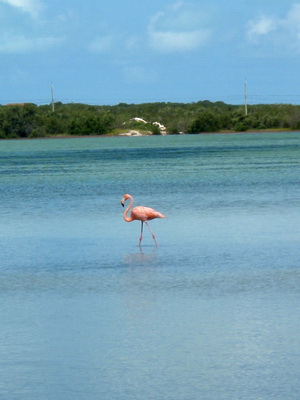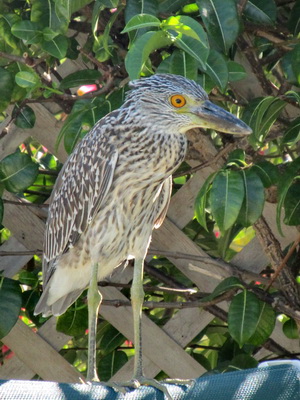
This juvenile yellow crowned heron came for a visit and a drink from the pool.
It’s been so hot of late and this juvenile, yellow crowned night heron has been visiting the pool at Harbour Club Villas to cool off and to get a drink. Juvenile night-herons have different plumage from the adults. The juvenile is grayish-brown overall with thin spotting on the back and upperwings. This heron is a year round breeding resident in the Turks and Caicos Islands. The adults look quite different and are dark gray over all, with black on the face and a large, white ear patch. The crown is also white. In breeding season, they get white, thread-like plumes on the back of the head and long, plumes of feathers on the back.
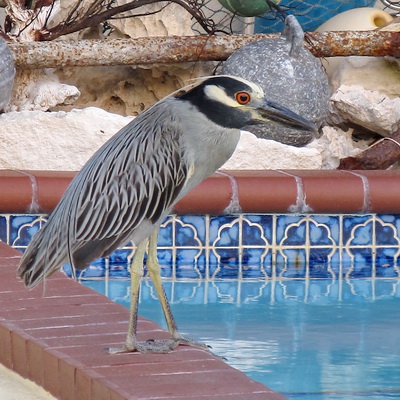
The adult night heron has a thread like plume on the back of its head
Yellow-crowned night herons acquire adult plumage by two years of age. It makes a living catching crabs and especially likes land crabs, and will even dig into their burrows to catch them. Although primarily nocturnal it does sometimes hunt in the day, and can be found quietly stalking through the dry bush looking for a meal. They’ve been seen eating cockroaches too.
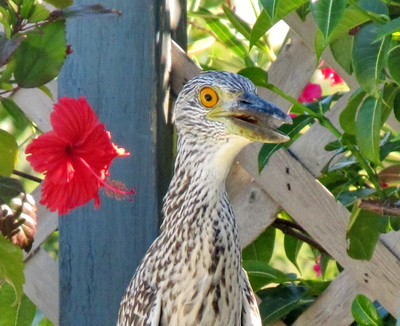
He didn't like me approaching him and kept making warning noises.
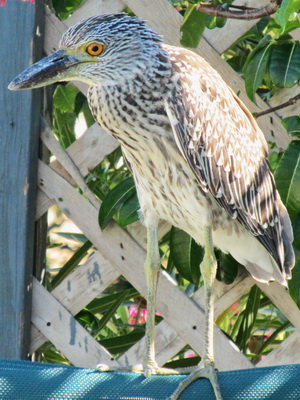
Juvenile night heron with gorgeous brownish grey spotted feathering
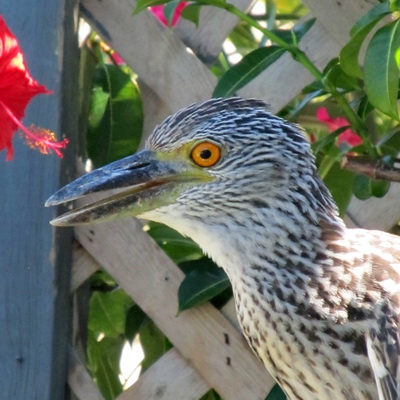
Piercing yellow-orange eye
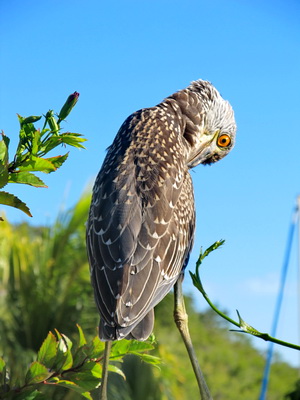
Preening yellow crowned night heron sitting on the pool fence at Harbour Club Villas.
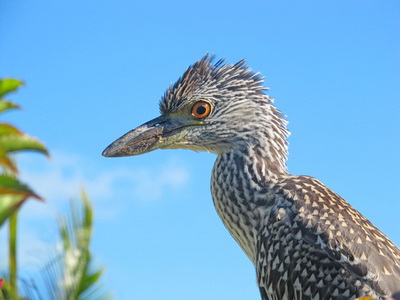
looks pretty fierce here as he gets ready to fly off.
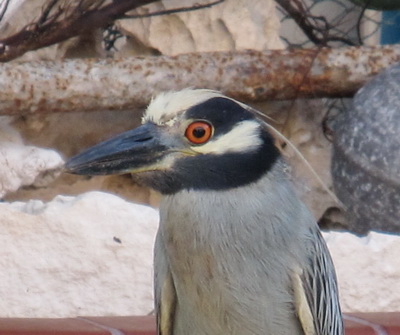
Love the long plumes from the back of his head.
Our guests at Harbour Club Villas are frequently surprised by both Green Herons and Yellow Crowned Night Herons as they fly in to drink water from the pool. It’s lovely to see and watch them as they squawk and make their presence known. It’s almost like the pool belongs to them and how dare these non flying creatures be allowed to lounge around at will!!
Happy bird watching……….the Turks and Caicos Islands has many species of birds and this is just one of them.
Marta
http://www.harbourclubvillas.com

